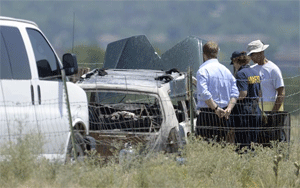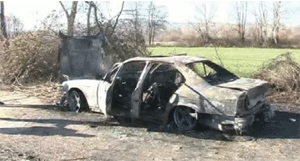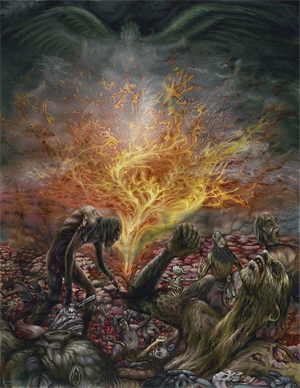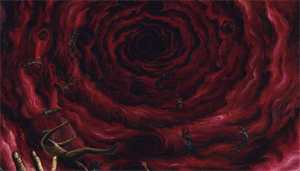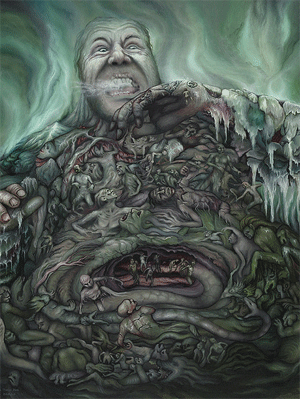by Joshua Eaton
July 6, 2018, 8:00 AM
NOTICE: THIS WORK MAY BE PROTECTED BY COPYRIGHT
YOU ARE REQUIRED TO READ THE COPYRIGHT NOTICE AT THIS LINK BEFORE YOU READ THE FOLLOWING WORK, THAT IS AVAILABLE SOLELY FOR PRIVATE STUDY, SCHOLARSHIP OR RESEARCH PURSUANT TO 17 U.S.C. SECTION 107 AND 108. IN THE EVENT THAT THE LIBRARY DETERMINES THAT UNLAWFUL COPYING OF THIS WORK HAS OCCURRED, THE LIBRARY HAS THE RIGHT TO BLOCK THE I.P. ADDRESS AT WHICH THE UNLAWFUL COPYING APPEARED TO HAVE OCCURRED. THANK YOU FOR RESPECTING THE RIGHTS OF COPYRIGHT OWNERS.
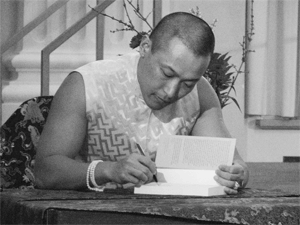
Sakyong Mipham signs a book during a program in Munich, Germany, on Feb. 2, 2007. CREDIT: Robertivanc via Flickr
A senior official in the Buddhist group Shambhala International admitted Monday that its head, prominent Buddhist teacher and author Sakyong Mipham, had coercive sexual relationships with his female students, according to meeting notes obtained by ThinkProgress.
The notes come from a private video call Monday between ground-level Shambhala leaders and its governing body, called the Kalapa Council. They reveal a crisis of leadership, with members calling for Mipham, the council, or both to step down in the wake of a sex scandal that has rocked the organization.
“There is no one holding this body accountable right now,” one person told the council during a question-and-answer session. “That’s not ok [sic]. I want to see some accountability. I want to see members step down.”
Mipham and the Kalapa Council referred requests for comment to the public relations firm Hiltzik Strategies, which declined to comment on the record.
Last week, the advocacy group Buddhist Project Sunshine published a report detailing allegations of coercive relationships and sexual assault by Mipham — including a second-hand allegation that a woman in Chile accused him of rape.
Senior officials within Shambhala made several other previously unpublished disclosures during the hour-and-a-half-long call, including:
● Shambhala is hiring the Halifax law firm Wickwire Holm to investigate the allegations against Mipham.
● Two members of the Kalapa Council — a governing body within the organization whose members have been appointed by Mipham himself — have held separate interventions with Mipham in the past over his heavy drinking and his louche behavior with women, one of which lead to him going on “retreat.”
● A council member and another senior official seemed to admit to the facts of a 2011 incident in which Mipham allegedly sexually assaulted a woman in the kitchen of his Halifax home after the first birthday party for one of his daughters.
● Shambhala nevertheless believes the Chile allegation to be untrue and said that the organization has “first-hand witnesses who indicate it isn’t true.”
In a letter sent to Shambhala members before the report’s release last week, Mipham acknowledged what he called “relationships” with his female students in the past, but he stopped short of admitting to any sexual misconduct.
“I have recently learned that some of these women have shared experiences of feeling harmed as a result of these relationships,” Mipham wrote. “I am now making a public apology.”
Mipham echoed those sentiments at the beginning of the call Monday, apologizing again for this behavior, saying he has “a lot of hard work to do” and that he feels “sad and embarrassed” about the disclosures. He did not go into detail about his behavior or how it might have affected the women involved.
Early in the call, one member of the council, Adam Lobel, described the “wild culture of drinking, spontaneous poetry, and parties” he witnessed while working closely with Mipham in the early to mid 2000s.
“A lot of what we saw with women was consensual,” Lobel said. “What was disturbing was his inability to connect with women as a human being [sic].”
Lobel described what he saw during that time as “off and confusing.” Eventually, Lobel said, an intervention was staged that led to Mipham being sent on a “retreat” after which he appeared to settle down — evidenced by fewer instances of drunken public debauchery and his 2006 marriage to Khandro Tseyang.
debauch verb
1a archaic : to make disloyal
b : to seduce from chastity
notorious for debauching young women
2a : to lead away from virtue or excellence
debauched by ambition
b : to corrupt by intemperance or sensuality
debauched poets
a debauched society
debauch noun
1 : an act or occasion of extreme indulgence in sensuality or carnal pleasures : an act or occasion of debauchery
2 : ORGY
a debauch of pleasure
-- debauch, by Merriam-Webster
“The story line I’ve had in my mind is one of human growth and healing,” Lobel said before admitting that the organization needs to own up to Mipham’s history with women.
But at least one woman has said Mipham sexually assaulted her since his marriage in 2006. In the Buddhist Project Sunshine report and an interview with ThinkProgress, the woman described how Mipham lifted up her skirt, groped her breasts, and began drunkenly kissing her in the kitchen of his Halifax home in 2011 after the birthday party for his one-year-old daughter.
“I felt like I just did something I didn’t want to do, and I didn’t have a way out,” the woman, who asked to remain anonymous out of fear of reprisal, told ThinkProgress. “I felt trapped … There was no one there to help me. I felt alone.”
During the call Monday, two senior Shambhala officials, one of whom is on the Kalapa Council, seemed to concede the facts of that incident and said they tried to provide support to the woman afterward.
“She told me her account a couple of days after,” one of the officials said. “I said what happened was not ok [sic] and it’s not your fault. I shared my feelings with [Mipham].”
Shambhala is not aware of any incidents since 2011, according to notes from the Monday call.
ThinkProgress is not identifying the two senior officials in order to protect the identity of the woman who says Mipham sexually assaulted her.
Toward the end of the call, an unnamed person said they had a sexual relationship with Mipham in 2003 and challenged Lobel’s assertion that the relationships he saw Mipham engage in were all consensual.
“I had a relationship with [Mipham] in 2003,” the person said. “I don’t feel it was consensual, given the power difference.”
“All of us are lea[r]ning a lot about power dynamics,” Lobel responded. “I no longer see those relationships as consensual in that same way. I’m sorry for any of the pain you have gone through.”
Lobel did not respond to a request for comment on the leaked notes.
Mipham showed visible regret as he addressed the call Monday, according to a brief summary of the call posted online by the Shambhala meditation center in Atlanta, Georgia. Some of those who participated in the call expressed gratitude at what they described as his decision to discuss his past with greater honesty.
But others have said that it’s time for the organization’s rigid, top-down leadership structure to change. That will be difficult for an organization that’s viewed itself as building an enlightened society with Mipham as the literal king at its center — complete with a royal court, attendants, titles, a flag, and an anthem.
Sue Gilman, a Shambhala teacher, summarized the mood she saw among the group’s rank-and-file in an email included in the summary published by the Atlanta, Georgia center.
“The Sakyong must step down until full investigations have happened,” Gillman wrote. “The Kalapa Council has to dissolve and a transitional governing body [be] put in place. The monarchy needs to go. This needs to happen now, not in a month.”
Do you have information about sexual misconduct in Shambhala or another religious organization? Contact reporter Joshua Eaton by email at jeaton@thinkprogress.org or by Signal at 202–684–1030.

